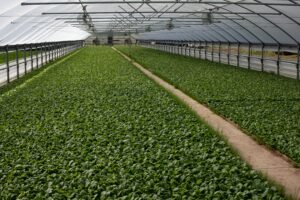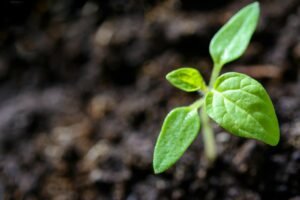Vegetable Plants FBX Growth:
In the modern era of agriculture and 3D visualization, the demand for digital representations of plant growth is skyrocketing. Among various technologies, Vegetable Plants FBX Growth stands out as a revolutionary approach combining agriculture, 3D modeling, and visual simulation. FBX (Filmbox) files are widely used in the 3D industry for their ability to store high-quality animations, models, and textures. When applied to vegetable plants, FBX growth models allow farmers, researchers, developers, and designers to visualize the complete lifecycle of vegetable crops in a digital space.
This article will guide you through the concept of Vegetable Plants FBX Growth, its applications, benefits, and answer some of the most frequently asked questions related to this innovative technology.
What is Vegetable Plants FBX Growth?
Vegetable Plants FBX Growth refers to the creation of 3D models of vegetable plants with detailed growth animations using the FBX file format. FBX files store complex 3D data, including geometry, textures, skeleton rigs, and animation sequences. By applying this technology to vegetable plants, developers can visualize every stage of growth, from seed germination to full maturity.”

The term Vegetable Plants FBX Growth is gaining popularity among 3D artists, agricultural researchers, game developers, and educational platforms that require realistic simulations of plant growth for various purposes. Whether it’s for academic presentations, virtual farming simulations, gaming environments, or architectural visualizations, FBX-based vegetable growth models offer high realism and flexibility.
Importance of Plant Growth Visualization
The traditional methods of observing vegetable plant growth involve real-world farming, time-lapse photography, or scientific observation. However, these methods are time-consuming and limited by natural conditions.FBX models provide a digital alternative by creating 3D representations of vegetable plants and animating them to display different growth stages within a controlled virtual environment.”
By utilizing Vegetable Plants FBX Growth, users can witness the germination, leaf development, flowering, fruiting, and harvesting stages of various without the need to wait for actual time to pass. This digital simulation plays a vital role in research, education, entertainment, and agricultural planning.
Applications of Vegetable Plants FBX Growth
The use of FBX growth models for vegetable plants has diversified applications across industries. One of the primary uses is in educational settings where students can study the biology of plant growth through interactive 3D simulations. These models allow learners to zoom in, rotate, and explore each developmental stage with unprecedented detail.
In the gaming industry, realistic vegetable plants with FBX growth animations enhance environmental realism in farming games, survival games, and simulation games. Game developers use these models to create dynamic farming experiences where players can cultivate crops and observe their virtual growth over time.
Architects and landscape designers use Vegetable Plants FBX Growth to visualize how vegetable gardens or green spaces will evolve over seasons within their project renderings. This helps in better planning and presentation to clients.
The agriculture sector also benefits greatly by simulating crop growth digitally. Farmers and agricultural researchers use these models to predict growth patterns, visualize planting layouts, and train new workers using virtual reality platforms.
How Vegetable Plants FBX Growth Models Are Created
Creating high-quality FBX growth models of plants involves several technical steps. It starts with botanical research to ensure accuracy in plant structure and development. 3D artists then use modeling software like Autodesk Maya, Blender, or 3ds Max to build the geometry of the plant at different growth stages.
Developers meticulously design each stage, from seedling to mature plant, to reflect real-world characteristics. They apply textures and materials to give the plant realistic colors, surface details, and shading. Animation sequences smoothly transition between different growth stages, showing leaf unfolding, stem elongation, flowering, and fruit production.”
Once the modeling and animation are complete, the entire data is exported into an FBX file. This file format preserves the 3D geometry, materials, skeleton rigs, and animations, making it compatible with a wide range of platforms such as game engines, simulation software, and virtual reality systems.
Benefits of Using Vegetable Plants FBX Growth Technology
The adoption of Vegetable Plants FBX Growth technology brings several advantages to various fields. One of the most significant benefits is the ability to visualize plant growth in a short timeframe, eliminating the limitations posed by seasonal or environmental factors.
For educational purposes, FBX models provide an engaging and interactive learning experience. Students can study plant anatomy and growth processes without being restricted by classroom resources or lab equipment.
In entertainment and game development, using FBX models enhances realism, making virtual environments feel more authentic. Players interacting with lifelike vegetable plants that grow and evolve over time contributes to immersive gameplay.

For farmers and agronomists, Vegetable Plants FBX Growth serves as a powerful tool for crop management and training. Simulating different growth scenarios can help in planning planting schedules, understanding crop lifecycles, and predicting yields more effectively.
Virtual tours, architectural visualizations, and marketing materials also benefit from the inclusion of realistic vegetable plant growth sequences, making presentations more captivating and informative.
1. Autodesk Maya (3D Modeling Software Mentioned)
In the section “How Vegetable Plants FBX Growth Models Are Created,” you can add:
“3D artists then use modeling software like Autodesk Maya, Blender, or 3ds Max to build the geometry of the plant at different growth stages.”
2. Blender (Popular Open-Source 3D Tool)
In the same section, add:
“Free tools like Blender offer an accessible way to create detailed FBX models of vegetable plants.”
Popular Types of Vegetable Plants in FBX Growth Models
FBX growth models commonly represent numerous vegetable plant species to meet diverse industry needs. For example, developers frequently create tomato plant models to showcase distinct growth patterns, flowering stages, and fruit production.
Modelers also design lettuce and spinach plants for simulations focused on leafy greens cultivation, helping visualize leaf development and harvesting stages essential for greenhouse operations.
In addition, they often produce FBX models of pepper plants, cucumber vines, and bean plants for agricultural simulations, educational platforms, and interactive applications.
Each plant model varies based on growth cycle, structural details, and environmental requirements, ensuring the FBX models accurately reflect their real-world counterparts.
Future of Vegetable Growth in Digital Agriculture
The future of Vegetable Plants Growth looks promising as digital agriculture evolves. More farmers are using growth models to improve their practices, making them more common and impactful. The combination of these models with VR, AR, and AI will transform how we understand plant growth.
Farmers can use VR headsets to walk through virtual fields, observe plant growth, and spot potential issues early. AR apps may project 3D vegetable models into real spaces to help with farm planning and education. AI simulations can use FBX models to predict plant growth under different conditions, supporting precise and sustainable farming. As 3D modeling tools evolve, FBX models will offer even greater detail and realism, making them essential across many industries.”
FAQs About Plants FBX Growth
What is the main advantage of using FBX files for vegetable plant growth models?
FBX files store 3D models, animations, and textures in a portable format, making it easy to transfer realistic plant growth models without quality loss.
Can Plants FBX Growth models be used in game development?
Yes, these models are widely used in game development to enhance realism. They improve farming simulations, survival games, and environmental storytelling. Developers use FBX growth models to show detailed plant lifecycles. As a result, players can experience planting, nurturing, and harvesting crops in realistic virtual environments.
Are FBX vegetable plant models suitable for educational purposes?
Absolutely, FBX growth models are ideal for education. They help students explore plant growth stages interactively and understand plant biology beyond textbooks or experiments.
How realistic are Vegetables models compared to real plants?
High-quality FBX models deliver exceptional realism by incorporating detailed textures, accurate structures, and lifelike animations. Even though they are digital creations, their advanced visual realism often makes them almost indistinguishable from real vegetable plants. As a result, they are highly effective for training, simulation, and presentation purposes, providing a near-authentic experience for users.
Where can I find Vegetable models?
Vegetable Plants FBX Growth technology offers realism, efficiency, and insight for farmers, educators, developers, and designers.. Websites like TurboSquid, Sketchfab, and CGTrader often offer a variety of plant models suitable for different industries.
Conclusion
.They provide realistic, animated representations of vegetable plant lifecycles. As technology advances, FBX growth models are becoming integrated into virtual and augmented reality systems. This trend will significantly enhance their impact across multiple industries. Plants FBX Growth technology offers realism, efficiency, and insight for farmers, educators, developers, and designers . In addition, this innovative approach allows professionals to visualize growth processes more accurately, leading to better decisions and improved outcomes.